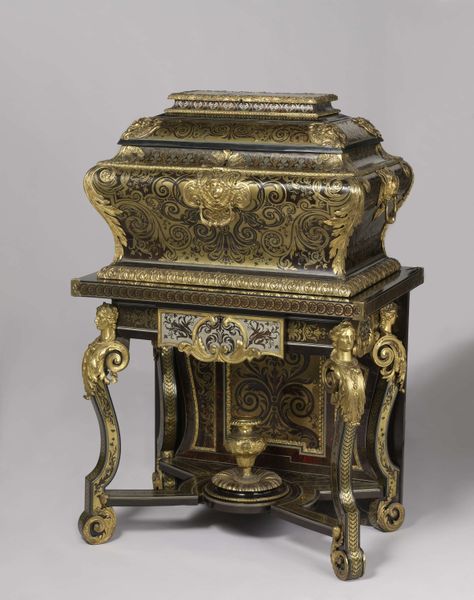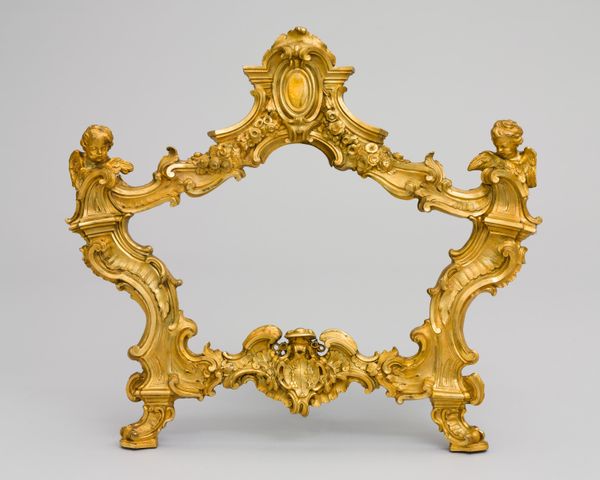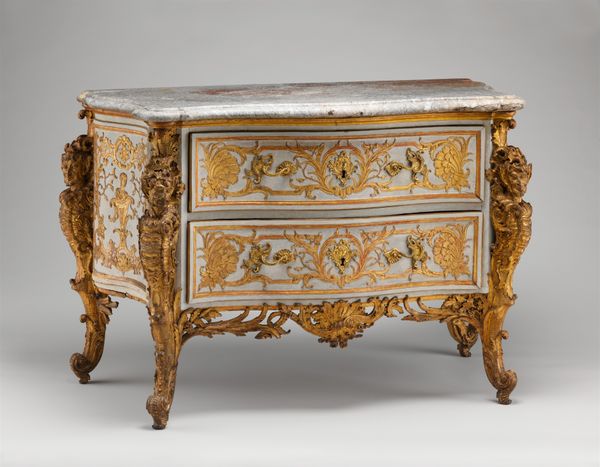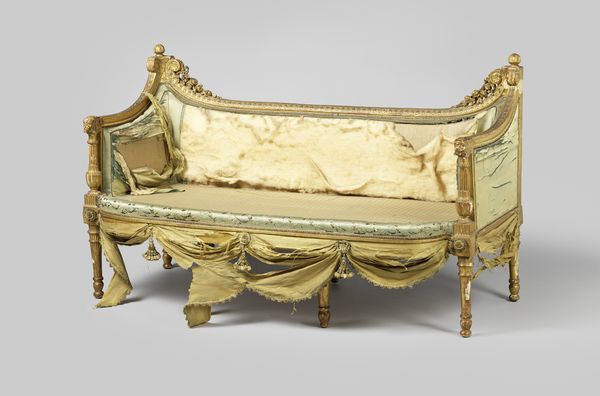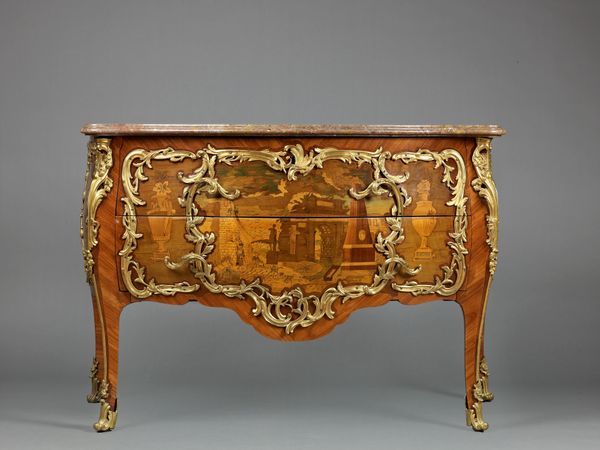
painting, wood
#
painting
#
sculpture
#
furniture
#
wood
#
metal and woodwork
#
rococo
Dimensions: 53 9/16 x 60 5/8 x 28 3/8 in. (136.05 x 153.99 x 72.07 cm)
Copyright: Public Domain
Curator: Oh my! It’s rather...dramatic, isn't it? Like a gilded stage for secrets. Editor: It certainly catches the eye. What is it exactly? Curator: This is a writing desk, crafted around 1760. An anonymous artist created it, using both wood and paint, exemplifying the Rococo style. You can currently find it at the Minneapolis Institute of Art. Editor: Rococo is right. Just look at that opulent decoration and elaborate ornamentation. I bet its owner was deeply entangled within aristocratic social hierarchies of the time. Every detail shouts status. Curator: Yes, the symbolism inherent in such elaborate design speaks volumes. The flowers, for example, signify prosperity and beauty. Rococo prioritized elaborate curves and natural motifs, and, by extension, so did its commissioners. Editor: That's where it becomes more interesting for me. We see these symbols now, but what did they really mean in terms of gender and power? Aristocratic women in this period had access to literacy and cultivated correspondence, which enabled forms of networking but they also remained confined to patriarchal social structures. So, while it’s beautiful, this object represents real limits. Curator: A potent intersection indeed. This desk reminds me of earlier reliquaries; spaces holding relics, symbols of power and presence. Here, personal letters become sacred objects. Editor: Yes! Private letters themselves functioned almost like sanctioned speech, approved discourse under an extremely regulated structure. Even in supposed intimacy, they reflect the societal pressures imposed particularly on women who had to act as agents for power rather than own the means to exert that power on their own terms. Curator: Considering all this brings an entirely different layer to my appreciation of it. It really transcends a beautiful piece of furniture, reflecting a wider system of power and its inherent restraints. Editor: Exactly. When we interrogate even seemingly ornamental art pieces such as this writing desk, we start understanding power's intricate dynamics. It challenges how we relate to material culture now, given that such legacies of domination keep repeating themselves.


